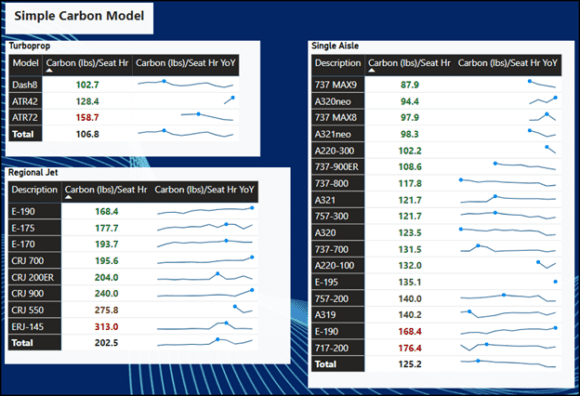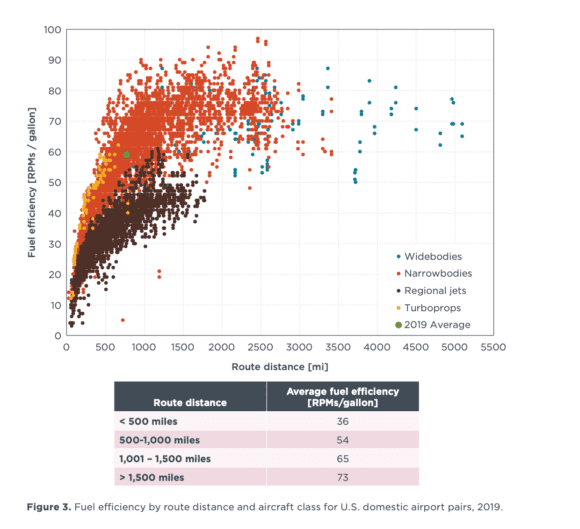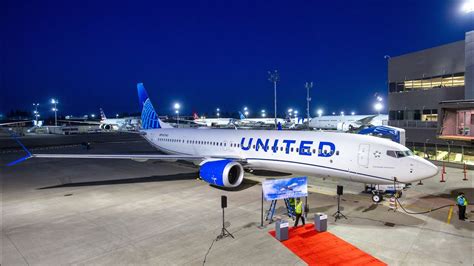
green aviation
The US airline pilot shortage will not remain a US problem for long. With sharply increased salaries, any commercial pilot with an FAA ATP will return to the US and secure a job with a US airline. That means the US pilot shortage trickles across the globe. Oliver Wyman estimates that North American airlines will face a shortage of nearly 30,000 pilots by 2032. Mesa’s CEO thinks the pilot shortage will last another five years. We want to make the case that US Airline Pilots are on the wrong side of history.
Introduction
US airline pilots have created remarkable protectionist barriers. As Investopedia states: “Traditionally, protectionism is a left-wing policy. Right-wing politics generally support free trade, which is the opposite of a protectionist stance. Left-wing politics support economic populism, of which protectionism is a part.” US airline pilots are political, very political. And they are generous to politicians. Airline pilots may be the highest-paid unionized profession.
The 1,500-Hour Rule
US pilots managed to get Congress to pass the 1,500-hour rule. Whereas, pilots in the UK and Europe need 250 flight hours to work at an airline. Would US airline pilots seriously argue they are better and safer because they have six times the flight hours? They might. But to say that the UK and European airlines are six times less safe is ludicrous. No airline knowingly risks an aircraft, crew, and passengers. The 1,500-hour rule is a law protecting a profession with a starting annual salary of up to $206,000.
The 1,500-hour rule does not make US airlines safer to fly than non-US airlines. This opinion comes from Airline Ratings, who have been tracking this for years. Another view, for context, on this rule: To become a Captain of a commercial aircraft, you must have logged at least 1,500 flight hours and hold a full Air Transport Pilots License (ATPL). However, in reality, most short-haul airlines require a minimum of 3,000 hours before considering any pilots for promotion. So not only is there a US airline pilot shortage, there’s a even tighter market for captains.
Scope Clause
Next, let’s talk about the Scope Clause. This is another legal barrier to the optimal functioning of US airlines. The central idea is to protect American, Delta, and United pilots from competition at regional airlines. These three airlines reach into the regional airlines pilot pool to recruit pilots. This means regional airlines have continual training costs they can never reduce. In the linked story, Mesa Airlines now offers a signing bonus of $110,000 for captains to join the airline.
But the problem doesn’t end there. The shortage of regional pilots has led to communities losing air service. The Regional Airline Association (RAA) noted in November 2022 that 66% of US airports are only served by regional airlines. RAA notes that 76% of U.S. airports lost air services when comparing October 2022 with October 2019. And it has gotten worse.
The pandemic saw people move away from large cities to smaller communities. This may be a fundamental shift and it does and will impact commercial flying. There are opposing flows – airlines cutting regional service just as regional markets might be growing. While cutting service is an airline decision primarily based on markets and profits, the pilot shortage helps airlines cut regional flying.
The US airline pilot protection racket generates another impact that needs to be highlighted – the environment. The combined 1,500-hour rule and Scope Clause create a pollution cocktail big airlines and Congress won’t discuss. But you should know about this. Even the most vociferous climate change denier must concede that less pollution is better than more pollution.
On average, regional jets generate 62% more carbon emissions than single-aisle airliners. Please take a look at our ESG model for US airlines below.

The “greener” the number, the lower the emissions. On average, a turboprop generates 106.8 pounds of carbon per seat hour. A single-aisle aircraft generates 125.2 pounds of carbon per seat hour. But a regional jet generates 202.5 pounds of carbon per seat per hour.
ICCT reports fuel burn metrics that support this data as the following chart illustrates.

Because of Scope Clause with its 86,000-pound weight limit, US regional airlines deploy aircraft with 20-year-old engine technology. While aircraft engine technologies are capable of well over 25% better fuel burn now, they cannot be deployed because of Scope Clause. One new regional jet that used state-of-the-art engines has been destroyed because of Scope Clause. Another promising model has been sidelined for years because of Scope Clause and may never see EIS.
Opportunities for new entrants?
The changes within the US market create problems and opportunities. How will commercial aviation adjust? What is the next wave of regional aircraft? Smaller aircraft (<50 seats) might work as they once did. These aircraft might focus more on point-to-point service rather than be exclusively hub-feeders.
There is a lot of interest in electric aircraft, like that from Heart Aerospace. New ideas being developed also meet market requirements, such as TheAirCraftCompany. Then there is hydrogen, like UniversalHydrogen. Embraer also has a plethora of ideas.
All great ideas – but these aircraft have to prove their economics. And they need to prove this to skeptical operators. There are other options, like the Do328eco from Deutsche Aircraft. A Do328eco using SAF probably hits 80% of the “green targets” without complicated fuel and engine systems. The US customer for a regional aircraft solution is a risk-averse industry with wafer-thin margins.
It’s Green Hammer Time
While Congress and the management at the big three US airlines won’t confront pilot unions, it’s time for travelers and people concerned about the environment to be aware of the costs imposed by outdated US pilot protection rules. US Airline Pilots are on the wrong side of history. Indeed, the growing number of communities negatively impacted by losing air service also need to become proactive and get involved. The prodigious forces of the ecological movement can play a role here acting as the Green Hammer to help break outdated work rules hindering economic progress and a cleaner aviation environment.
A thin golden thread connects the global economy, and its name is commercial aviation. Cut that thread, and the damage is plain to see. We saw what COVID did to travel and the economy and we are still paying the costs. Evolving US demographics and the need to stay economically connected with no high-speed trains (<500 miles trips) means the status quo is no longer viable. In the US we will likely to see the first changes to keep people connected via regional air service.
We suggest three items to consider:
- Remove the Scope Clause weight limit to allow for state-of-the-art regional jets to be developed. The current rule is ecologically indefensible.
- Cut the 1,500-hour rule to match global industry standards, allowing pilot trainees an easier and more affordable career path. Let market forces perform their magic. While compromising safety is not an option, nor should there be an artificial market constraint to economic progress.
- Encourage US regional airlines to deploy state-of-the-art turboprops to rebuild air service. This is an easy hurdle.
Views: 113





I totally agree, especially with the 1500 (unstructured) hours rule.
However, you cannot just cut the flying time to 200 hours in the USA. In Europe we do competency based taing (not hours based) but we require an approved MCC/APS course and a much more elaborate type rating.
If you want details, come and visit us at EPST.
When I had 250 hours I certainly didn’t think I was qualified to fly for part 121 operation. You work your way up as a flight instructor and then working for a regional airline before you fly for the big airlines. Earn it.
The 1500 absolutely makes us airlines more safe.
Would you rather have a taxi driver be a 15 year old with a learners permit or licensed driver of 16 or 17?
The argument for state of the art turboprops lacks some understanding of the differences between US and European flying. I would argue the geography of the US is the biggest impediment to turboprop flying. When the state of Texas is as large as half of Europe, you can see the scope of the problem at why the much slower but more efficient turboprops have not caught on in the US market.
Addison, you are woefully wrong on so many points, misguided with your facts, and making assertions that would greatly harm the flying public.
Disclaimer: I am a US based Regional Airline Captain
Airline pilots may be the highest paid union employees for good reason. Name another job that holds the fate of hundreds of people’s lives in their hands everyday- ATC is the only example I can think of and they are also unionized.
The argument you make that US Airlines aren’t safer because of the ATP rule is based on a list of the ’20 safest airlines’, on which nearly all major US carriers are represented. Just because an airline is safe doesn’t mean their respective aviation sector is safe. A few Asian airlines are listed despite the fact that there have been several crashes in their countries in the last few years. Meanwhile, the US hasn’t seen a Part 121 Passenger airline crash since 2009 with Colgan Air, the very origination of the ATP rule. We are in the safest era of US aviation. I’m willing to hear suggestions for increasing safety via other methods, but the ATP rule is here to stay, and no politician will stick their neck out to axe it.
Airlines may not want to knowingly cause accidents, but their actions have said otherwise in the past, such as when regional airlines were paying below minimum wage to first officers. There was a time this century when the starting wages were below $20k. Combined with merciless schedules and horrid bases making for long commutes, pilots were fatigued on day 1. Is that who you want flying your plane?
The regionals were created as a loophole- airline unions no longer allowed different pay scales for the same equipment, so the Majors had to find another way to reduce cost to make more money. They settled on outsourcing flying to smaller companies with cheaper crews, equipment, and overhead. With deregulation this emphasis was only increased. But now we are in a time when there are only 3 big airlines, who each have a regional brand they use to exploit the markets they fly in. Fares are high because supply is low. Where a ticket on American from Phoenix to LA might cost $150, a flight from PHX to Bakersfield on their regional costs $400. Roughly same distance of flight, less fuel burn, and lower costing crew, less seats but substantially higher margins. Where does all the money go? Not to the regional. The majors use regionals to artificially limit seat supply to keep prices up. Scott Kirby admitted it himself when he commented in 2021 that when a ULCC such as Spirit enters a regional market, United’s costs go way up. United could easily fly a 737 into just about any regional airport and charge less, but they don’t want to. If that’s not corporate greed I don’t know what is. Combined with most regional airports only being served by 1 or 2 carriers and you have a recipe for monopolistic cartelism. Thankfully for the consumer, the ULCCs have been targeting these markets and have been steadily bringing average fares down in these areas, but there’s a long way to go.
The only method the unions have from losing all flying to regional airlines, is the Scope Clause. The Scope Clause works 2 ways, it prevents the major airlines from forcing their pilots to fly smaller planes for less money, and it prevents regionals from flying larger planes also for less money. There’s nothing saying the majors can’t fly more 737s and A320s. If they really needed more seats available they could get more of these planes, which as you stated, are more efficient per seat. They have the money. Before the pandemic we had record profits, and it’s looking like it will go back to that again, so they aren’t exactly hurting for cash. It’s the regionals who are hurting, but they have had 10+ years to adjust to the regulations, and the Scope Clause existed long before that. I agree with you that turboprops are more green at least in emissions, but the flying public has consistently shown disapproval for them. That being said they are available, so if airlines charged less for fares I’m sure they would find willing flyers. Plus they could market that your flight is that much better for the environment, because ecology is the number one factor for which airline people choose to fly, not prices.
Obvious sarcasm aside, what’s stopping manufacturers from producing new planes that meet scope? Why did they choose to use larger heavier engines on old frames that were already close to if not over the weight limit? Make a smaller lighter airframe and fit the engines to that. Mitsubishi was close to being the only new plane to meet scope, but they were stubborn. The M100 (the scope compliant model developed by former Bombardier engineers) would only be produced if they could produce the M90 (the larger home-grown design). But the M90 was not competitive with the likes of the 190-E2 and the runaway success of the A220 (ironically also a Bombardier design). That along with internal issues and COVID resulted in the only currently manufactured scope compliant jet being the E175. Embraer desperately wants to discontinue it in favor of the E2, which is definitely more efficient, but they knew what the scope Clause was and bet on it being raised. They lost that bet. Now you say it’s our fault for that? We’re just playing by the rules we agreed to long ago.
You talk about US Airline Pilot protectionism, but this article reeks of US Airline protectionism. Make no mistake, the airlines are not friends of the consumer. They will gladly cut service to Small Town USA in favor of more profits. And drivel like this article are attempts by a corporatist media to get the public behind lowering safety standards in the interest of money. Believe me I’m thankful I could take advantage of this current shortage, and wish there were more opportunities for aspiring pilots out there. But lowering the safety standards is not the way to make it happen. If you post this comment you will prove that you have some journalistic integrity, otherwise I will know you are nothing more than a paid shill in the pocket of Jonathon Ornstein and his friends.
Thank you for your time,
E
I am sorry, but having a minimum of 1500 hours to be an airline pilot is a smart concept. Low time pilots shouldn’t be in the cockpit of an airliner.
What a manipulative management tool. 737 Max. Not able to handle runaway trim.
Experience matters.
Nuff said.
Now go get open heart surgery from a 1st year resident and let me know how it works out for you.
Hi Addison.
One of the things the airlines can do to reduce impact on the environment is to adopt the technologies we have at Fuel Matrix- as discussed with you. Please note I am now in contact with the FAA about this. I would very much like to have a call with you. Kind regards. Roy Fuscone
Royfuscone@aol.com
+44 7956 502309
You reference John Orstein? Hardly a balanced perspective and he’s arguably been the least labor friendly CEO over the last 25+ years. Look up Freedom Air, and the fact you would have to look it up (and I highly suspect you do) would indicate your lack of depth of airline pilot relationship history. I don’t have time just now, but I if I get a few I can refute and add much sorely needed context to this poor article.
Airline economics are system-centric. If an airline cuts service to a (smaller) community, it does so usually in the explicit case of substitute opportunity. Which means free up pilots to fly aircraft (of any size) into markets 2hich can overall generate more revenues/yield/profits. In that sense it is entirely open market economics. The pilot shortage is real.
On the note of ecology, what a populist argument. A few years ago, this was a non-issue, but today it seems all the rage to talk about. Every airfare now shows co2 data. I agree with the intended sarcasm of my fellow commenter. Let’s all fly cleanest and ignore price. Folks, it doesn’t work that way. BTW to argue for a more efficient airplane is moot when the desire forvreducing emissions by 15%:competes with no service at all.
On that note, there are – and have not been for a long time – projects for a <50 regional jet to replace crj200s with newer tech. Same years ago, no replacement for 19pax B1900Ds or 30pax EMB120s. Everyone knows this, so the scope Clause falls into a very narrow utility, primarily E175. The 86,000lbs is arbitrary at this point. Time for change. And as for 250 v 1500 hrs, why not meet in the middle? Unions are simply bad for business because they distort market realities and equilibriums. This is one of the reasons we have this mess to begin with.
Your arguments are pure bovine scatology!
I could add more to negate your points, but other commentators have already done it.
You claim you “appreciate conversations with smart people from whom I learn so much”, but regrettably you have not learned much about the worldwide aviation industry.
This is pro-management propaganda. I’ve been a professional pilot for 24 years and have never made over 200K a year! Yeah, let’s put low-time 250-hour pilots in the cockpit, and when a new airplane like the 737 Max has problems, it will crash and kill everyone because the pilots are impotent with the autopilot. Wonder why a MAX never crashed in the US despite many more flight hours?
We appreciate you taking the time to read this and comment. Pilots have not responded warmly to our note, while C-level management has. However, we did not carry water for anyone – we call it as we see it.
Technology will do what it does to everyone – if you don’t adapt, your job disappears. Ask any bank clerk. All the public policy in the world can’t stop it.
US commercial pilots must comprehend that the two “rules” they have to protect themselves are not an everlasting panacea. It’s not just IT that is coming for them, the Greens are going to come for them as well. All management has to do is be patient. And that is what we’re seeing happen.
What airline has a starting salary over 200k?
As mentioned previously imho several inaccuracies. One very controversial point missed in this article is the age discrimination practiced by ALPA and the APA against its own senior members. The pilot shortage could easily be dampened by extending the retirement age of pilots to age 67 or 68. Legislation that accompanied the FAA Reauthorization was campaigned against massively by these two pilot unions which represent the bulk of airline pilots in the U.S.
You mentioned protectionism. Look no further as It was disgusting and clearly on display publicly by both unions against its senior members the past few years. A large well funded effort of misinformation was put against its own senior pilot members which was quite honestly all about greed. Put out reams and reams of mistruths to misguide our politicians implying that at age 65 the most experienced airline captains all of a sudden become dangerous and become a safety risk to the flying public. What safety is really at risk is the rapid movement of inexperienced pilots in the industry right now. It’s scary. An alarming number of accidents known and an even higher that are swept under the rug that are not known, show the real story. Reference the website, http://www.raisethepilotage.com
On that website it explains the situation very clearly on all points why we should raise the pilot age. Lots of great info.